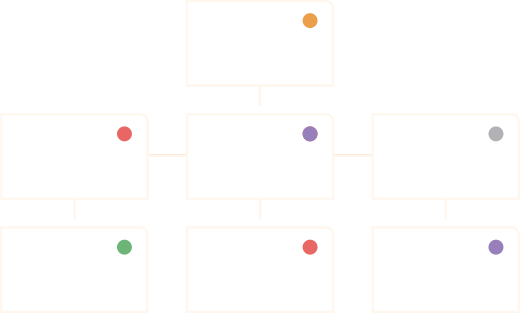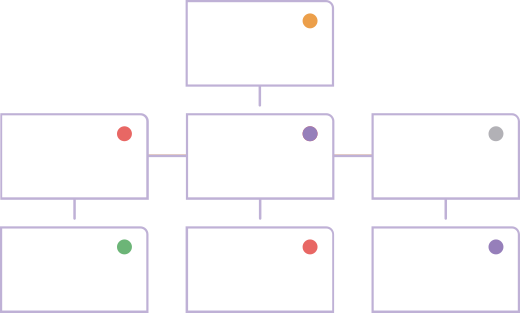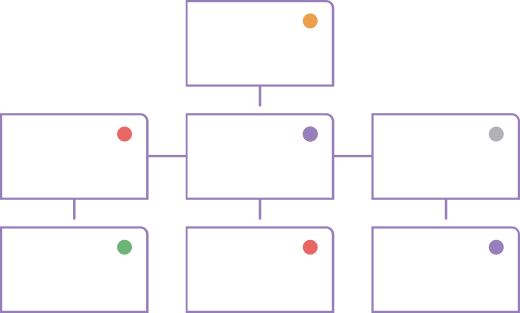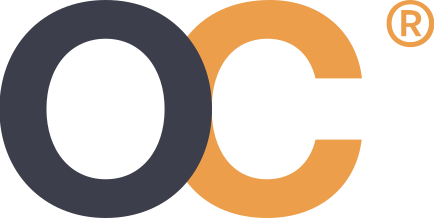
Jen Taylor
September 29, 2025
Workforce planning is the process of aligning your people with your business strategy. This guide explains what it is, why it matters in HR, and how strategic, skills-based, and people planning help.…

Strong teams don’t just happen. They’re built through workforce planning: a make-or-break process that encompasses careful talent management, big-picture strategy, and robust reporting. Proper planning leads to smart hiring and cohesive, efficient staff, while less structured practices can create inter-departmental conflicts, extended hiring timelines, and staffing gaps.
But what is workforce planning in practice? Let’s dive into everything you need to know about this concept, from key approaches and strategies to its major benefits and effects on other HR functions.
Your company’s talent drives your company’s success. And as organizations grow, bringing in skilled candidates who fill gaps and contribute to key projects becomes even more important. HR teams must prioritize workforce planning to ensure every hiring process goes off without a hitch.
So, what is workforce planning? During the workforce planning process, HR leaders evaluate the company’s current status to forecast future staffing needs and review teams for skill gaps or overlapping responsibilities. This often starts with a thorough audit of existing roles before determining future hiring needs, with a focus on sustainable success, team efficiency, and manageable growth.
Workforce planning aims to:
To make workforce planning truly effective, HR leaders must move strategically and consider business objectives at every step. Knowing you need a Senior Merchandising Manager is one thing, but understanding how this role impacts the business, its key responsibilities, and how it interacts with other department leaders is what will set you up for success!
HR teams often plan three to five years in advance and must collaborate closely with upper management to project future needs and objectives. This helps prevent miscommunication and ensures all departments have proper support as the organization grows. HR must consider all scenarios and ask questions like:
Curious How Leading Companies Plan for Growth?
Discover how OrgChart simplifies forecasting and workforce planning across HR and leadership teams.





Workforce planning will look a little different for every organization. Depending on your goals, you may need to shift your approach to prioritize certain aspects of the process. Luckily, modern workforce planning software like OrgChart provides a single solution to multiple methods.
Here are three of the most common workforce planning approaches, along with how companies can leverage software to streamline their efforts.
Strategic workforce planning is all about looking ahead to align your staff with long-term business goals. With this approach, HR leaders can:
HR leaders can use workforce planning software to visualize changing team structures, simulate “what-if” scenarios, and align talent plans with budgetary restrictions or overarching business goals.
Want to see what strategic workforce planning software looks like in action? Explore how OrgChart supports HR planning.
In fast-moving industries, skill gaps, not just headcount gaps, can slow progress. Skills-based workforce planning puts agility and adaptability at the forefront. This approach helps identify your staff’s current capabilities, prevent talent shortages, and anticipate the skills you’ll need as you expand.
You can use skills-based workforce planning software to map existing competencies, analyze team strengths and weaknesses, and plan for reskilling or upskilling initiatives.
A people planning approach, also known as operational workforce planning, focuses on the day-to-day needs of the business. This strategy prioritizes:
Dedicated people planning software supports tasks like hiring plan alignment, org chart updates, and cross-functional department audits.
The best workforce planning software brings all three approaches together in a single platform. Learn how OrgChart’s Workforce Planning Solution supports strategic vision, skills insight, and operational clarity.
Implementing new software and onboarding your HR team and upper management may seem like a lot of work up front, but the benefits will last for years to come. Leveraging workforce planning software can lead to improved forecasting and planning, data-driven decision-making, a reduced risk of overstaffing or skills gaps, and enhanced agility and responsiveness. Many HR teams take it a step further with workforce optimization software, which delivers measurable results for large organizations.
Enhanced agility and responsiveness: Planning tools can quickly adjust organizational structures to adapt to new roles and gather top internal candidates after unexpected departures.
Bring Clarity to Your Workforce Planning
See how OrgChart connects strategic, skills-based, and people planning into one platform for smarter HR decisions.





OrgChart is trusted by 2,000+ HR teams worldwide.
Businesses are dynamic organizations, and HR teams must update their workforce planning approach as the company evolves. During times of major transitions, economic turbulence, or top-down restructuring, a blended strategy may be necessary to cover all of your bases.
Here’s a quick overview of which approach is best for which situation:
Regardless of which method you utilize, choosing the right tool is key. Your software should adjust to your needs and help streamline the process as you work through different workforce planning strategies.
In business, nothing is done in a vacuum, and proper workforce planning creates a ripple effect across other HR functions. The most directly affected are position management and headcount planning.
With position management, HR leaders define, manage, and track the roles and responsibilities within a company to create a clear, effective organizational structure. Together, workforce planning and position management ensure each role has a defined purpose and is connected to the business’s overarching goals.
Headcount planning empowers HR leaders to budget responsibly and keep labor costs and staffing levels under control. When combined with careful workforce planning, this process prevents overstaffing and helps companies stay agile and adaptable during talent shortages or economic downturns.
So, what is workforce planning software’s position in this process? Your chosen tool should integrate seamlessly with your existing HRIS and payroll platforms to ensure data connectivity across your HR tech stack. The right software will enable a dynamic process that allows HR leaders to manage all aspects of their duties in one comprehensive platform.
Workforce planning is one of HR teams’ most vital functions, improving decision-making and preventing major conflicts and support gaps. During the workforce planning process, HR leaders evaluate current talent capabilities, forecast future hiring needs, and strategically align every position with the business’s goals.
The exact approach you take will depend on the company’s priorities. Growing organizations seeking sustainable, long-term success can benefit from a strategic approach. Meanwhile, smaller organizations can utilize people planning and skills-based approaches to manage their daily operations effectively and minimize talent shortages.
Workforce planning software is here to simplify the process and provide a one-stop solution for every approach. These tools help elevate HR strategy across the board and can streamline other functionalities, like position management and headcount planning.
Set Your Workforce Up for Success with OrgChart
Ready to move from theory to action? Book a personalized demo and explore how OrgChart supports workforce planning, structure, and growth.






Restaurant Hierarchy Chart: Structure & Roles…
Restaurants are arguably the busiest businesses out there, with servers, cooks, managers, and executives working hard to ensure every guest has a stellar…
Read Article
Managing Positions in a Company Chart: Strategies for Modern HR Teams…
As companies grow beyond 100 employees, managing organizational structure becomes exponentially more complex. HR professionals need an advanced, dynamic…
Read Article
Healthcare Organizational Chart: Structure, Examples & How to Build One…
Explore the power of People Analytics. Unlock data-driven HR strategies to optimize your workforce with our tools.…
Read Article